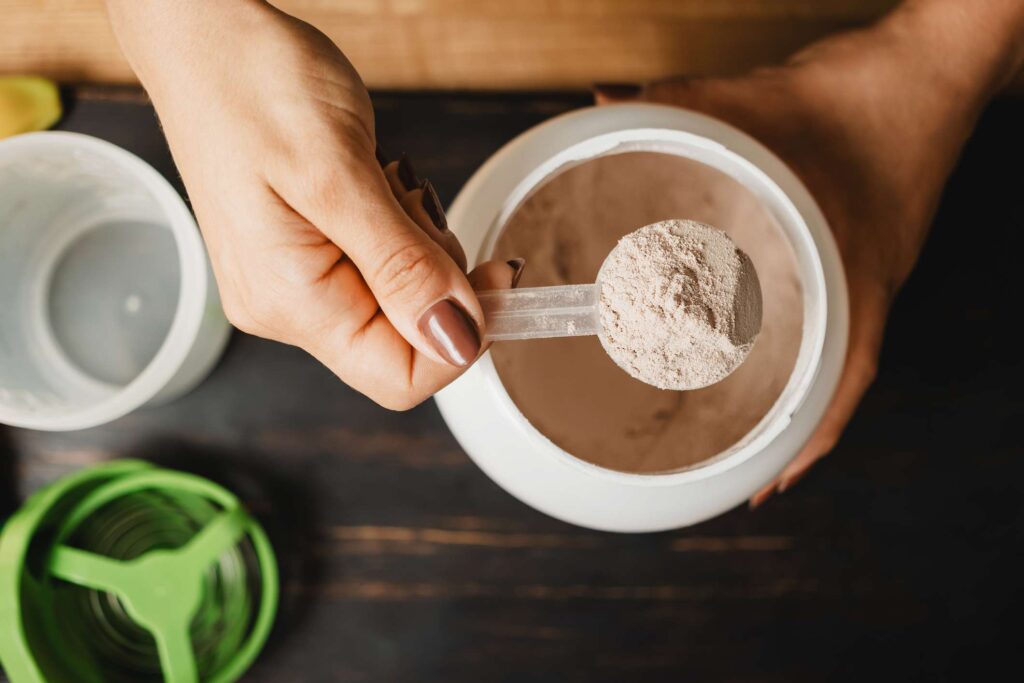| Population | Recommended dosages | Notes |
| General population | 3-5 grams (g) daily | The loading phase is usually not needed unless you are looking to build creatine stores quickly. |
| Athletes | 3-5 g daily | After an optional loading phase of 20 g per day, split into four doses for 5–7 days. |
| Athletes with a larger body weight/people who engage in high-intensity exercises | 5-10 g daily | After an optional loading phase of 20 g per day, split into 4 doses for 5–7 days. |
| Older Adults | 3-5 g daily | After an optional loading phase of 20 g daily for 7 days, followed by 10 g per day for 7 days (to improve working capacity). Another option is 20 g daily for 10 days, followed by 4 g daily for 20 days (to reduce fatigue) |
| Vegetarians | 3-5 g daily | May benefit more from creatine supplementation due to lower natural creatine stores. |
| People with creatine synthesis deficiencies | 10-30 g daily | Higher doses are needed to improve brain health and avoid health problems due to creatine deficiency. |
Creatine is available as a powder, capsule, or gummy. It should be taken with plenty of water as creatine draws water into the muscles, which can increase your body’s need for hydration. You can also add creatine to your pre-workout drinks and smoothies.
The exact dose of creatine you need depends on your fitness goals or health needs. For example, you may not need the loading dose strategy if you do not engage in high-intensity workouts. Taking 3–5 grams of creatine is enough to provide health benefits with fewer side effects. For best results, creatine should be taken consistently (typically more than 2 weeks).
Researchers have also found that taking creatine with carbohydrates (about 94 grams of carbs + 5 grams of creatine) or carbohydrates and protein (47 grams of carbs + 50 grams of protein + 5 grams of creatine) can enhance creatine storage and retention in the muscle.
Several studies and stances exist on the best time to take creatine. However, taking it close to your workout—either before or after—is ideal for people looking to optimize their fitness goals.
There are several types of creatine supplements available for you to choose from. Some of these include:
Creatine Monohydrate
This is the most widely used and studied form of creatine. It contains about 88% creatine by weight and is well-absorbed, with an absorption rate close to 100%. Creatine monohydrate is also more affordable and available for purchase than other creatine forms.
Creatine Citrate
This form of creatine contains citric acid, which is thought to help improve the solubility and absorption of creatine compared to creatine monohydrate.
However, no clear evidence suggests that creatine citrate has better absorption than creatine monohydrate. Rather, research shows that both forms of creatine have similar bioavailability, meaning the body can easily absorb and use them.
Creatine Nitrate
Creatine nitrate is a newer form of creatine, so it has not been as extensively studied as creatine monohydrate. Nitrates have been found to improve exercise performance, so some researchers theorize that combining them with creatine may enhance performance.
However, studies show that equal doses of creatine monohydrate and creatine nitrate have similar bioavailability and performance.
Creatine Ethyl Ester
This form of creatine was also designed as an alternative to creatine monohydrate to improve bioavailability and absorption. While creatine ethyl ester is marketed as more bioavailable, there is not enough evidence to suggest it is actually better absorbed than creatine monohydrate.
Creatine Hydrochloride
Research suggests that creatine hydrochloride may be better absorbed than creatine monohydrate, but it offers no significant fitness or health benefit over creatine monohydrate and is also considerably more expensive.
However, one study found that creatine may cause changes in body composition in recreational weight lifters, while creatine monohydrate did not show such benefits.
Creatine Magnesium Chelate
Some studies suggest that creatine magnesium chelate may reduce the typical water retention seen with creatine use. However, no substantial evidence indicates that magnesium creatine chelate is superior to other forms of creatine.
Creatine is generally safe when used at the typical dose (a loading dose of 20 grams per day for up to seven days and 3–5 grams per day for up to 12 weeks). Some research has shown that creatine can be safely used for up to five years, but long-term studies are limited.
When taking creatine, you may experience side effects like:
- Water weight (due to water retention in the muscles)
- Muscle cramps
- Nausea
- Diarrhea
- Headaches
- Heat intolerance
- Muscle stiffness
Taking doses lower than 10 grams may reduce the risk of stomach-related side effects.
Who Should Avoid Creatine?
Creatine may not be suitable for everyone. For instance, while creatine doesn’t appear to affect the kidneys in people without health conditions, it may increase the risk of kidney failure in people with pre-existing kidney disease. If you have kidney problems, consult your doctor before using creatine.
You may also want to talk to your doctor before using creatine if you:
- Are pregnant (it’s best to avoid use as its safety is not guaranteed)
- Have bipolar disorder
- Have Parkinson’s disease
Creatine may interact with other medications and supplements, including those that affect kidney function, like diuretics. Always consult with a healthcare provider before starting creatine, especially if you’re taking other medications or supplements.
The exact dosing of creatine you will need depends on your fitness goal. If you are a beginner athlete looking to maximize your creatine stores in a very short period of time, then taking a loading dose followed by a maintenance dose might be ideal. If not, a maintenance dose taken daily might be enough to meet your fitness needs. Keep in mind that you need creatine consistently to reap its benefits.


